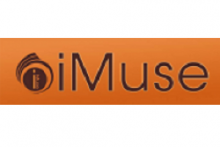Projects
OSWINDS team has participated in several research programs funded by national and European Commission research funds. OSWINDS has participated in more than 25 research and development projects from which it has scientifically leaded more than 15 projects in the area of social networks, Web content mining and big data analytics. The most recent research activity involves relevant projects funded by EU FP7 framework in the areas of Internet Science, smart cities and cloud based frameworks and implementations. The most recent projects are presented next.

HERAKLITOS II : Web data clustering techniques
PhD funding program with the research been co-financed by the European Union (European Social Fund – ESF) and Greek national funds through the Operational Program “Education and Lifelong Learning” of the National Strategic Reference Framework (NSRF) – Research Funding Program: Heracleitus II. Investing in knowledge society through the European Social Fund, the project has focused on data mining techniques which have dealt with the scalability and qualitative content detection in recommender systems.

COST project on Energy efficiency in large scale distributed systems
COST Action IC0804 proposed realistic energy-efficient alternate solutions to share IT distributed resources. As large scale distributed systems gather and share more and more computing nodes and Storage resources, their energy consumption is exponentially increasing. While much effort is nowadays put into hardware specific solutions to lower energy consumptions, the need for a complementary approach is necessary at the distributed system level, i.e. middleware, network and applications. The Action characterizes the energy consumption and energy efficiencies of distributed applications

iMuse
Culture heritage content virtual management with emphasis on sensor, Web and database technologies which enabled studying and developing of a new type of Virtual Museum integrating data streams from Web, Sensors (RFIDs) and Intranets. A Virtual Wing has been implemented and its software was installed at infokiosks, allowing for virtual tours to the Museum’s wings, and excavation sites. The application collected information from repositories with fully compatible Web, Internet and Intranet standards and exploiting sensor (RFID) information streams.



